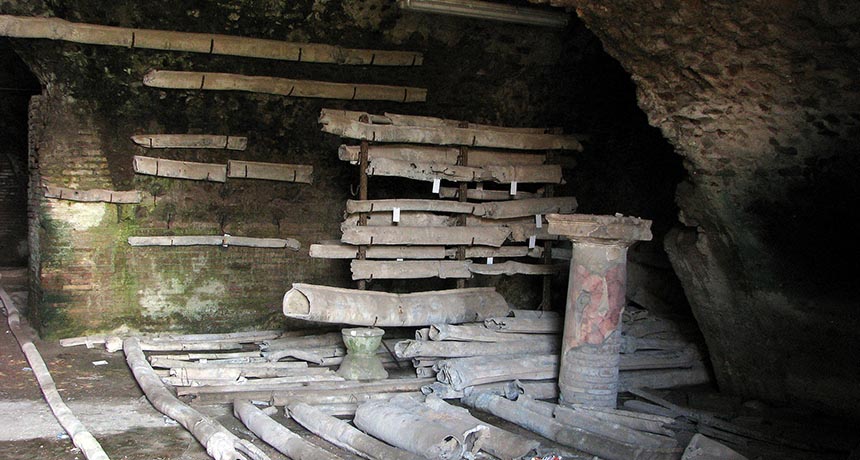Ancient mud documents the legacy of Rome’s lead pipes

Runoff from lead pipes like these in ancient Rome’s water system could help researchers track urban development.
Chris 73/Wikimedia Commons (CC BY-SA 3.0)

Runoff from lead pipes like these in ancient Rome’s water system could help researchers track urban development.
Chris 73/Wikimedia Commons (CC BY-SA 3.0)